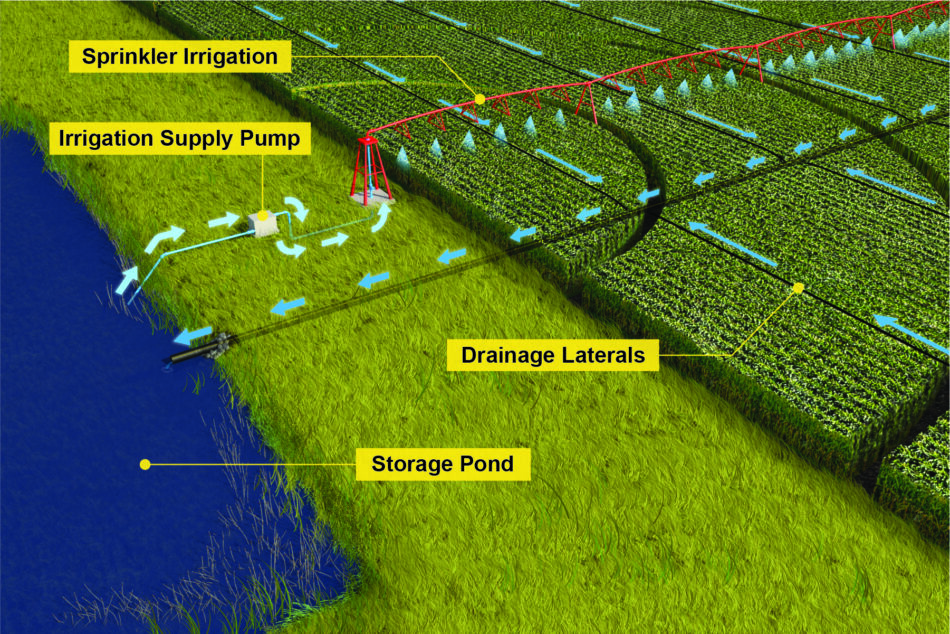
Drainage Water Recycling
Practice Overview
Drainage water from periods of excess moisture is stored in a reservoir to be reused as irrigation water later in the season when it’s dry and when crops need it the most.
Benefits
- Reduced nutrient loss
- Higher and less variable yields
- Reduced annual flow from land
How It Works
Rainfall timing and amount rarely matches up with timely field access (planting, harvest, etc.) and crop water needs – there’s either too much or too little water at the wrong time. Drainage water recycling captures excess water from the drainage system and stores it to use for irrigation in dry periods. Stored water can be reused in a subsurface, sprinkler, or other irrigation system. With less water leaving a site, there’s less nutrients and sediment leaving with it.
Installation Considerations
- Most effective on flat fields
- Depending on storage pond, water may need to be filtered prior to irrigation
- Incorporate overflow in the storage pond design
- Power needed on site for pumps